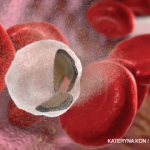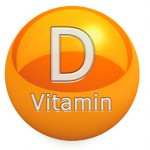Pediatrics
Monitor and Treat Low Vitamin D Insufficiency in Children
Bowden SA, Robinson RF, Carr R, Mahan JD. Prevalence of vitamin D deficiency and insufficiency in children with osteopenia or osteoporosis referred to a pediatric metabolic bone clinic. Pediatrics. 2008;121: e1585–e1590.
Abstract
Objectives: The purpose of this work was to determine the prevalence of vitamin D deficiency and insufficiency in children with osteopenia or osteoporosis and to evaluate the relationship between serum 25-hydroxyvitamin D levels and bone parameters, including bone mineral density (BMD).
Materials and Methods: Serum 25-hydroxyvitamin D, 1,25 dihydroxyvitamin D, parathyroid hormone, and other bone markers, as well as bone mineral density, were obtained for 85 pediatric patients with primary osteoporosis (caused by osteogenesis imperfecta or juvenile idiopathic osteoporosis) and secondary osteopenia or osteoporosis caused by various underlying chronic illnesses. Pearson’s correlation was used to assess the relationship between vitamin D levels and different bone parameters.
Results: Vitamin D insufficiency (defined as serum 25-hydroxyvitamin D <30 ng/mL) was observed in 80% of patients. Overt vitamin D deficiency (defined as serum 25-hydroxyvitamin D <10 ng/mL) was present in 3.5% of patients. Using a more recent definition for vitamin D deficiency in adults (defined as serum 25-hydroxyvitamin D <20 ng/mL), 21.1% of the patients had vitamin D deficiency. There was a significant inverse correlation between 25-hydroxyvitamin D and parathyroid hormone levels. There was a positive correlation between 1,25 dihydroxyvitamin D and parathyroid hormone, alkaline phosphatase, and urine markers for bone turnover.
Conclusions: Vitamin D insufficiency was remarkably common in pediatric patients with primary and secondary osteopenia or osteoporosis. The inverse relationship between 5-hydroxyvitamin D and parathyroid hormone levels suggests a physiologic impact of insufficient vitamin D levels that may contribute to low bone mass or worsen the primary bone disease. We suggest that monitoring and supplementation of vitamin D should be a priority in the management of pediatric patients with osteopenia or osteoporosis.
Commentary
Osteoporosis in adults may begin in childhood. Clearly, the majority of bone development occurs during childhood and reaching a “personal best” in bone mass at that time gives one an advantage in avoiding osteoporosis in the future. This study by Bowden et al examines the levels of 25-hydroxy vitamin D and 1, 25 dihydroxyvitamin D in 85 children referred to a metabolic bone clinic for evaluation of possible osteoporosis. In addition, DXA scans, parathyroid hormone levels, and levels of metabolic markers of bone turnover, urine pyridinoline, and deoxypyridinoline were determined.


